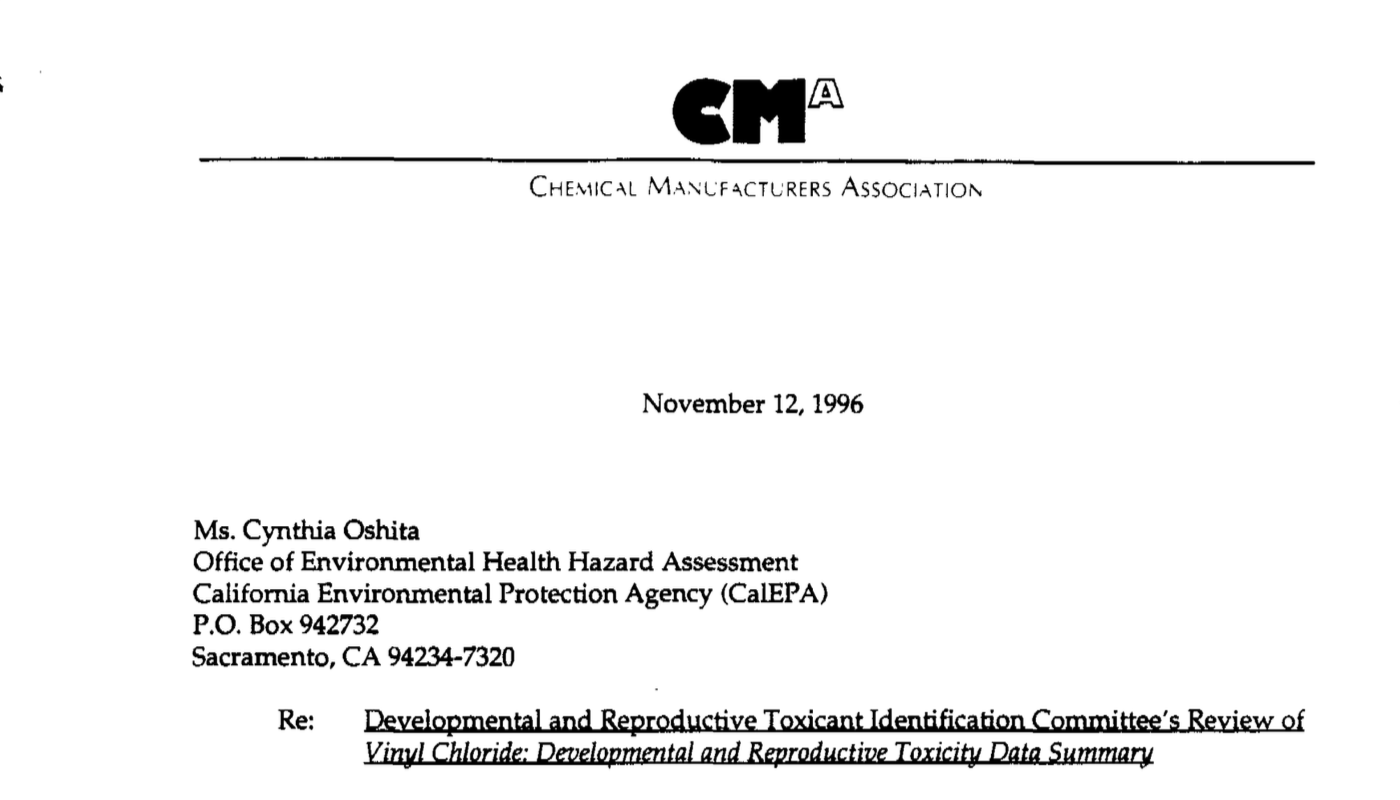Identifying Reproductive Toxicity: A Clash Between Industry and Government
In November 1996, the Chemical Manufacturers Association (CMA) sent a letter to the California Environmental Protection Agency (CalEPA) on “Vinyl Chloride: Developmental and Reproductive Toxicity Data Summary.” While evidence linking vinyl chloride and negative health effects began to emerge in the mid-1960s, CMA maintained that vinyl chloride was not likely to be a reproductive toxin.

As an industry trade association, the CMA Vinyl Chloride Panel consisted of leading U.S. manufacturers of vinyl chloride including the Dow Chemical Company, PPG Industries, and CONDEA Vista Company. After the association’s review of research on vinyl chloride, they concluded in the letter: “the Panel believes that the available evidence suggests that vinyl chloride is unlikely to be a developmental or reproductive toxicant.”

Despite this conclusion, the CMA voiced their plans of “sponsoring a combined two-generation reproductive and developmental toxicity study of vinyl chloride in CD rats.” Though the CMA claimed vinyl chloride was not likely a developmental or reproductive toxicant, the state of California currently requires a warning label on products containing chemicals known to cause cancer or reproductive toxicity–including vinyl chloride– under Proposition 65.
To view the full CMA document, click here!
